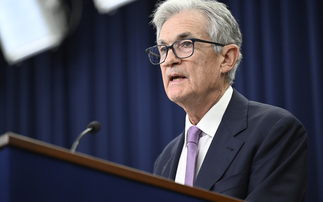Active US large-cap managers have not covered themselves in glory over the past few years, with only 22% outperforming their benchmarks between 2009 and 2014. Yet that could be about to change, says The Boston Company Asset Management (TBCAM).
Passively managed US large cap funds have been go-to strategies for many investors allocating to the region in recent years but the changing market backdrop could herald a solid opportunity for an active approach, according to TBCAM.
Over the past five years passive US large cap funds have experienced cumulative net inflows of US$397bn, while their actively managed counterparts have suffered US$346bn of cumulative net outflows.
George Saffaye, managing director at TBCAM, says: "Spurring this shift are the lower fee structures of index and exchange-traded funds as well as recent performance challenges of active US large-cap managers. This may appear to reinforce the common investor belief that active managers cannot consistently generate positive excess returns in US large cap equities, which are typically considered to be among the most efficient equity asset classes."
However, he believes three factors are challenging this consensus and could position active US large-cap equity strategies for significant alpha generation in the rest of 2015 and beyond: The end of quantitative easing (QE) in the US; lower stock correlations; and wider performance dispersion.
Saffaye says the end of QE should lead to more distinction between winners and losers across sectors once more, creating a more favourable backdrop for active US large-cap manager to generate alpha.
"During the five years of QE the Federal Reserve achieved its goal of creating a wealth effect as interest rates plummeted to multi-decade lows while equity and bond markets appreciated considerably. However, this caused US equities to move increasingly in tandem, making effective stock-picking more challenging."
He says roughly 60% of active US large-cap managers outperformed their benchmarks in both the 2000 to 2004 and 2005 to 2009 periods, while only 22% managed to do the same with QE in full force between 2010 and 2014.
Now, with the Fed signalling potential interest-rate hikes in late 2015/early 2016 he thinks the environment is ripe for active managers to show their worth once more.
"In fact, 65% of active US large-cap funds outperformed their benchmarks during the first quarter of 2015, which may represent a meaningful inflection point for performance trends," Saffaye adds.

In tandem with the normalisation of monetary policy, Saffaye believes lower stock correlations will ensue, as investors focus less on macro influences.
"In recent years, we have occasionally witnessed brief periods in which investors shifted their focus away from macro factors towards company fundamentals and earnings, which caused stock correlations to break down.
This occurred in 2013, for example, a year in which 51% of active funds outperformed their benchmarks. But a rebound in correlations followed in 2014 as investors re-focused on macro risks such as the Russia-Ukraine conflict, ISIS in the Middle East and global growth concerns (see figure 2).
So far this year, correlations have again been breaking down after reaching highs in October 2014, which marked the end of QE. Saffaye says stocks have started to trade more on companies' fundamental merits and weaknesses.

Finally, as stock correlations continue their descent, Saffaye says performance dispersion is expected to widen across sectors.
"The average spread between top-quintile and bottom-quintile annual returns for the S&P 500 Index was 79% from 2003 to 2014. The minimum annual spread was 61%, while the maximum was 134%. This spread between top and bottom performance is always present and can fluctuate based on underlying conditions. As stock correlations continue their descent, performance dispersion is expected to widen across sectors and this highlights the level of inefficiency across all sectors that can be exploited through selecting winners and avoiding losers," Saffaye concludes.

Source Ned Davis Research (2003 to 2014) 5 Past performance is not a guide to future performance. The value of investments and the income from them is not guaranteed and can fall as well as rise due to stock market and currency movements. When investments are sold, investors may get back less than they originally invested.
This is a financial promotion for Professional Clients only and, in Switzerland, for Regulated Qualified Investors and Qualified Investors only. This is not investment advice. Any views and opinions are those of the Investment Manager, unless otherwise noted. This material may not be used for the purpose of an offer or solicitation in any jurisdiction or in any circumstances in which such offer or solicitation is unlawful or not authorised.
BNY Mellon Investment Management EMEA Limited (BNYMIM EMEA), and any other BNY Mellon entity mentioned are all ultimately owned by The Bank of New York Mellon Corporation Issued in the UK and Europe (ex-Germany and Switzerland) by BNY Mellon Investment Management EMEA Limited, BNY Mellon Centre, 160 Queen Victoria Street, London EC4V 4LA. Registered in England No. 1118580. Authorised and regulated by the Financial Conduct Authority.Issued in Switzerland by BNY Mellon Investments Switzerland GmbH, Talacker 29, CH-8001 Zürich, Switzerland. Authorised and regulated by the FINMA. Issued as at 08.07.2015. CP15502 - 08.01.2016 (6M).













